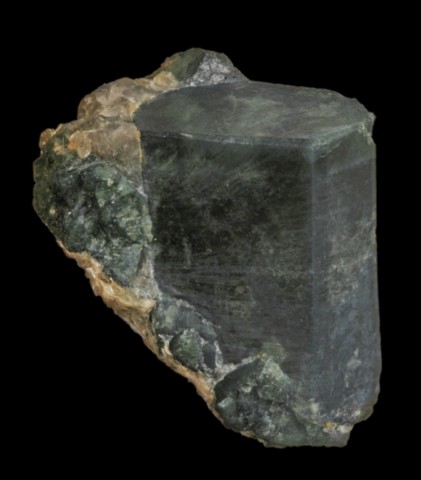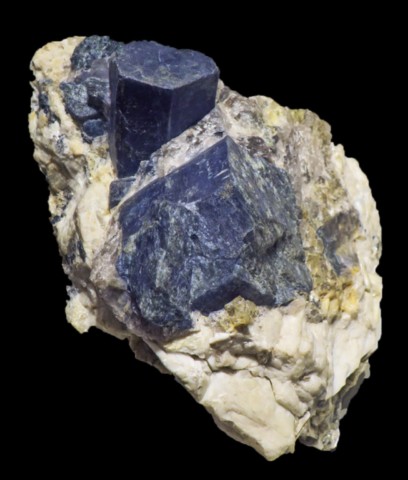TRIPHYLITE
Class : Phosphates, arsenates, vanadates
Subclass : Anhydrous phosphates
Crystal system : Orthorhombic
Chemistry : LiFePO4
Rarity : Fairly common
Triphylite is a primary iron and lithium phosphate found exclusively in sodolithic granitic pegmatites and is probably the most common phosphate in these formations. It forms a continuous series with lithiophilite, its manganese counterpart. Atmospheric and hydrothermal alteration of triphylite is at the origin of the formation of numerous secondary phosphates (ferrisicklerite, heterosite and purpurite when lithium is eliminated). This transformation gives the mineral a black surface color that propagates along the cleavages, drawing a grid pattern. Its name comes from the Greek treis (three) and phûlon (family), because this mineral contains three cations. Blue-gray to greenish-gray in color, becoming brown by alteration, generally translucent to opaque, triphylite most often forms cleavable to compact masses that can reach considerable dimensions (up to 5 meters); well-individualized crystals, prismatic with pseudohexagonal section, are very rare.
Main photo : Triphylite from Chandlers Mill Quarry, New Hampshire, USA © Rock Currier
Triphylite in the World
Twinning
No twin known for this mineral species.
Fakes and treatments
No fakes listed for this mineral species.
Hardness : 4
Density : 3.42 to 3.58
Fracture : Irregular
Streak : Gray-white
TP : Translucent
RI : 1.685 to 1.720
Birefringence : 0.008
Optical character : Biaxial -
Pleochroism : None
Fluorescence : None
Solubility : Acids
Magnetism : NoneRadioactivity : None


